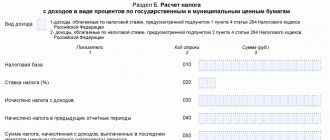In Russia, the transport tax may be abolished or reduced for owners of environmentally friendly transport, in particular gas engines, throughout the country. This measure is being studied by the Ministry of Economic Development and will be included in the comprehensive plan for increasing the energy efficiency of the Russian economy. The ministry is also studying the possibility of paying subsidies to buyers of cars with an engine capacity of up to 1 liter, and is also working on various incentives for manufacturers of environmentally friendly cars. Innovations will help improve the environmental situation in the country, experts say.
Is the environmental class of a car important for transport tax?
The value of the parameters involved in the calculation of transport tax largely depends on the rules established in the constituent entities of the Russian Federation (Article 356 of the Tax Code of the Russian Federation).
Regions are given the opportunity not only to independently introduce benefits, establish the procedure and terms of payment, but also determine the rate for calculating tax. The rate depending on the type of transport is tied to different parameters. For auto, motorcycle, non-jet aircraft, self-propelled water transport, it depends on the engine power. The basic rates are given in the Tax Code of the Russian Federation (clause 1, Article 361), but in the region they can change both upward and downward and differentiate. It is important that the final result does not deviate from the basic one by more than 10 times and does not concern a car with a power not exceeding 150 hp. With. (Clause 2 of Article 361 of the Tax Code of the Russian Federation).
Differentiation of rates may be related (clause 3 of Article 361 of the Tax Code of the Russian Federation):
- with the category of transport;
- his age;
- environmental class.
Thus, the environmental class of the vehicle for transport tax becomes important when choosing a rate, if such a dependence is established by the law of the region. In the transport tax return, line 110 in section 2 is allocated to indicate the environmental class. If the rate is not tied to this indicator, then a dash will be placed in the corresponding line (letter of the Federal Tax Service of Russia dated July 20, 2012 No. BS-4-11/12083).
Read more about the procedure for filling out a declaration in the article “Procedure for filling out a transport tax return.”
Approximate calculations and comparison with transport fees
Since the exact tax rates and calculation mechanisms are not yet known, one can only guess how much the introduced fee will cost citizens. However, it is obvious that its amount will increase compared to the transport tax. There are several versions regarding the calculation of the duty.
- Unlikely. According to it, the tax will be the sum of the amount of carbon dioxide emitted, multiplied by the rate and the annual mileage. Why is this option unlikely? Even if we assume that the rate is 0.5 rubles. for 1 g of CO2, the amount turns out to be impressive. A minute of mathematics: let's assume that a car emits 100g of CO2 per 1 km, and the annual mileage is 1000 km. Then the amount that will need to be paid to the owner will be 50,000 rubles.
- The fee can also be calculated based on the vehicle class, engine size and service life. In this case, the largest payment will fall on owners of used cars. Experts suggest that the law will provide discounts for owners of high-eco class cars.
It is impossible to say exactly how the amount of the fee will be calculated, whether the mileage of the car will affect it and whether additional benefits will be introduced.
There is not only an environmental tax, but also on luxury, winnings, and the import of vehicles. You can read about the nuances of these types of taxes, as well as taxes for old cars, self-propelled vehicles, motorcycles, trucks and electric vehicles on our website.
Ecological class of a vehicle - what is it?
What characterizes the environmental class of a car taken into account when calculating transport tax?
The operation of a car is accompanied by the release of pollutants. Their composition is determined:
- harmful substances contained in exhaust gases;
- vapors generated from a certain type of fuel.
The volume of these substances creates a very specific level of pollution that occurs during the operation of a passenger car or truck. According to this, vehicles were divided into environmental classes.
In the Russian Federation, the division established by the decision of the Customs Union Commission dated December 9, 2011 No. 877 is currently applied (subclause 1.4 clause 1 of Appendix No. 1). According to it, 6 environmental classes are distinguished (from 0 to 5). Each of them is tied to certain types of vehicles and the type of fuel on which their engine runs, and is correlated with the rules that determine the permissible level of emissions arising from the operation of a working car. A higher environmental class corresponds to a lower emission level.
What to expect and what is planned to be taken into account when calculating?
It is planned to introduce an environmental fee based on the example of countries in which a similar system is already in effect, so we can assume the main calculation parameters and possible problems that both motorists and regional authorities will have to face.
About the type and class of car
The type, or rather the class, of transport should become one of the main indicators for calculating the environmental tax. Thus, in Russia, most cars are classified as Euro-1, which means a high level of CO2 emissions.
With this approach, the optimal classes for transport will be Euro-3 and Euro-4. Owners of cars with electric motors will benefit the most - for them the duty will be zero.
Of course, changing tax rates will require replacing vehicle fleets. For trucks and buses, replacement periods are said to be 15-20 years, and for commercial vehicles - 20-25 years.
About emissions
The amount of fees will be calculated based on the amount of carbon dioxide per 1 km of travel: the lower the amount of emissions, the lower the tax amount. This is determined based on the class of the vehicle and the type of fuel used.
According to preliminary calculations, the amount of the environmental fee will be significantly higher than the transport tax.
It is also planned to change excise rates on gasoline - the higher the environmental class of the fuel, the lower the rate, which should also lead to the renewal of the country's vehicle fleet and an improvement in the environmental situation.
About the age of transport
The older the car, the more CO2 it emits into the atmosphere. The age of the vehicle will also most likely be one of the parameters in calculating the fee. The estimated time frame after which transport is recognized as a threat to the ecology of the region is known, although certain changes are possible in this regard.
Thus, the following recommended periods for the planned replacement of vehicles are called:
- for passenger vehicles – 10 years;
- for trucks – 15 years;
- for buses – 15 years;
- for commercial vehicles – 20-25 years.
How to find out the environmental class?
However, in order to find out which class the car belongs to, there is no need to refer to the above decision of the Customs Union Commission. This can be done in a simpler way.
The environmental class is indicated in a special line (No. 13) of the modern vehicle passport form (PTS). The environmental class number is given here not in numbers, but in words. In the old version of the PTS, which does not provide for a special line, a note about the environmental class number may appear in the “Special notes” column in the upper left corner of the document.
To learn how to convert the engine power of a car, indicated in the PTS in kilowatts, into horsepower, read the material “Transport tax on cars in Russia 2021 - 2020.”
Or will old trucks be banned altogether?
The Ministry of Industry and Trade wants to increase the basic transport tax rate for cars of environmental class Euro-3 and below from 2021. The ministry clarifies that the initiative concerns only commercial transport. Currently, at the federal level, such rates are set only based on engine power, but regions can differentiate rates by year of manufacture or class. At the same time, deputies propose to completely ban the operation of commercial vehicles below the Euro-0 and Euro-1 classes. According to the traffic police, there are at least 468.2 thousand such vehicles throughout Russia, excluding vehicles for which there is no data on the environmental class (2.6 million trucks).
The Ministry of Industry and Trade will soon send a proposal to the Ministry of Transport to sharply increase the basic transport tax rate for cars Euro-3 and below from 2021, Deputy Head of the Ministry Alexander Morozov said during a meeting on the development of urban electric passenger transport. The Ministry of Transport refrains from commenting.
The Ministry of Industry and Trade clarified to Kommersant that, in accordance with existing government instructions, the ministry, together with federal executive authorities, is preparing proposals to increase transport tax rates for commercial vehicles of environmental class 3 and below.
Its quantity, according to the Ministry of Industry and Trade, exceeds 3 million pieces. Such equipment daily causes irreparable damage to the environment and health of citizens of the Russian Federation, they believe, and the proposed measure will increase the attractiveness of new and more environmentally friendly vehicles, which in turn will have a positive impact on the environment.
This tax is regional. Currently, basic transport tax rates are set at the federal level based on engine power. Also, the Tax Code of the Russian Federation allows regions to establish differentiated rates for each category of vehicles, and “also taking into account the number of years that have passed since the year of production of vehicles and (or) their environmental class.”
The head of the State Duma Committee on Transport and Construction, Evgeny Moskvichev, came up with a more radical proposal - to ban commercial vehicles with Euro-0 and Euro-1 classes.
“Let's say no in two years to cars that operate on a commercial basis, (with environmental class) Euro-0 and Euro-1, let's hand them over to history, they are 35-37 years old, and we buy, buy spare parts “he said (quoted by TASS).
According to the traffic police at the end of 2021 (the latest current data), almost 60.6 million vehicles are registered in the Russian Federation. Of these, passenger cars (a total of 47.4 million cars) of the Euro-0 class are 2.1 million, the first class is 651.5 thousand cars, the second class is 2.6 million cars, Euro-3 class is 4.8 million cars. At the same time, the environmental class is not installed for 14.3 million cars. There are 6.5 million trucks registered in the Russian Federation. Of these, 2.6 million cars do not have an environmental class. Euro-0 includes 397.2 thousand cars, Euro-1 - almost 89 thousand cars, Euro-2 - 576.8 thousand, Euro-3 - 1 million cars.
KamAZ told Kommersant that the concern is against any ban on the operation of vehicles of low environmental class. “We are for economic measures to stimulate the decommissioning of such trucks and create conditions for a painless transition of equipment operators to a higher environmental class,” they explain, “and what this will be is a matter of discussion between the expert community and interested departments.” KamAZ adds that it supports the initiative of the Ministry of Industry and Trade. The GAZ group says that the government cannot help but respond to the fact that the fleet is rapidly becoming obsolete and is solving the problem of the safety of passenger transportation and the transportation of dangerous goods.
Sollers also supports the initiative to increase the transport tax rate on commercial vehicles of Euro-3 class and below, the company says. Now the retirement rate of the old vehicle fleet in the commercial segment is very low - 3% per year, while the normal level of retirement is at least 7%, they explain. As a result, the share of vehicles older than 10 years in the commercial vehicle fleet exceeds 70% of the total volume and remains critically high, which represents both an environmental (volume of polluting emissions) and an economic (operation of the fleet in the gray zone) problem. In addition, when used in private transportation, the outdated fleet also poses a potential safety threat to passengers, the concern concludes.
“Kommersant” calculated how many cars will not be allowed into the center of Moscow and St. Petersburg due to dirty exhaust
From a safety point of view, such initiatives aimed at one way or another limiting the use of “old” cars are correct, says Andrey Kamensky, marketing director of the Avilon car dealer. But he notes that the state needs to support the owner, who bears an additional burden. Such an idea is not easy to implement without special incentive programs that would help promote the renewal of the vehicle fleet, explains Mr. Kamensky: this could be the resumption of previously proven effective state programs for updating the vehicle fleet, under which car owners would receive a discount on a new one when returning an old car.
A Kommersant source in one of the concerns supports the need to renew state support for park renovation.
“The Ministry of Industry and Trade has always had the position that fleet renewal should be achieved through incentive measures, but at the same time, the ministry itself buried the most effective measure - the fleet renewal program, and without it they will never cope with this task,” he adds.
Olga Nikitina, Ivan Buranov
Results
One of the indicators that influences the applicable transport tax rate may be the environmental class to which a particular vehicle belongs. Whether to use it depends on the decision made when setting rates in the region.
The class number is indicated in the PTS of a modern vehicle in a specially designated line. If the PTS is issued on an old form, then information about the environmental class number may be reflected in the “Special notes” column.
Sources:
- Tax Code of the Russian Federation
- By decision of the Customs Union Commission dated 09.12.2011 No. 877
You can find more complete information on the topic in ConsultantPlus. Free trial access to the system for 2 days.
To the next level
The Ministry of Industry and Trade puts pressure on the gas: Russia is disappointed in electric cars
The authorities have significantly adjusted the development strategy of the national automobile industry
New support measures should have a positive impact on the development of environmentally friendly transport, says Vladimir Gutenev, First Vice-President of the Russian Union of Mechanical Engineers.
— We support these initiatives. In terms of support for car owners using gas and gas mixtures as motor fuel, in some regions the transport tax has already been abolished or significantly reduced. This gives good growth rates for the fleet of such vehicles,” he said.
A transport tax benefit of 50% for organizations and individual entrepreneurs is provided in the Nizhny Novgorod region, for individuals - in the Republic of Bashkortostan, recalled Vladimir Gutenev. In the Novosibirsk region, transport companies pay a fee of 10% of the established rates. In the Republic of Tatarstan, a state program for the development of the gas motor fuel market has been approved, providing for both tax incentives and compensation for purchased equipment, the expert noted.
Vigorous measures
Photo: Depositphotos
Old people shouldn’t drive here: deputies proposed banning junk cars
They want to ban older cars from the roads
Various tax breaks for owners of natural gas vehicles are also available in St. Petersburg and the Leningrad region. They are also in the Vladimir, Kaluga, Kostroma, Kaliningrad, Kirov, Kemerovo, Kurgan, Samara, Sakhalin, Smolensk and Chelyabinsk regions, as well as in the Khanty-Mansi Autonomous Okrug, Adygea, Transbaikalia, Chuvashia and Bashkortostan, noted auto expert Pyotr Bakanov.
The measures being discussed will have a positive impact on the state of the environment, says Rashid Ismailov, Chairman of the Russian Ecological Society. In practice, they have already shown effectiveness in the Chelyabinsk region, he noted. There is a demand among car owners for the greening of personal vehicles, the expert added.
What is considered the object of taxation?
All enterprises that cause damage to the environment are recognized as objects of taxation.
Such an object is recognized as environmental pollution that occurred as a result of:
- Emissions of pollutants into the atmosphere;
- Discharge of wastewater into bodies of water if it contains pollutants;
- Generation and handling of hazard class IV waste.
Environmental pollution is excluded from taxation if:
- Activities are financed by the state budget of any level;
- Waste is generated at facilities that do not harm nature;
- Waste after waste accumulation is disposed of within 11 months from the date of generation.
In the second case, an official conclusion will be required. This will require an examination, coordination with the local environmental agency, and obtaining appropriate documentary evidence from it.
Tax base and tax period
The tax base is defined as the mass of emissions and discharges of substances into the atmospheric air and water bodies from stationary sources of pollution, the mass of generated production and consumption waste.
The taxpayer determines the tax base independently, based on industrial environmental control data:
- for each stationary source that was used during the tax period;
- for each pollutant;
- for each hazard class of production and consumption waste.
The rate is calculated based on 1 ton of pollutants (waste).
The tax period is taken to be a calendar year. The tax is proposed to be made in advance.
The draft law retains the entire volume of deductions from the tax base if the payer has implemented measures to compensate for the negative impact on nature (70% of the tax amount calculated for the tax period). In addition, increasing coefficients for payments are taken into account if the load of organizations exceeds the volumes established by the regulator.
What is the basis for calculating environmental tax?
At each economic entity, a calculation is made of the volume of emissions that pollute the environment, as well as the waste generated and disposed of. The data is entered into the appropriate strict reporting journals. It is these volumes of polluting waste that will become the basis from which fiscal payments will be calculated and withheld.
In this case, the mass that is sent for processing and disposal will be subtracted from the volume of waste generated. This makes it possible for business entities to reduce the tax base through the prompt disposal of hazardous waste and emissions.
In addition, it should be taken into account that environmental tax rates have increased significantly when compared with the environmental fee. For example, for dioxins they amount to 13.4 billion rubles. for 1 ton.
Already in 2021, environmental tax rates will be regularly adjusted. They will be multiplied by a coefficient that takes into account changes in the consumer cost of goods in the country.
Coefficient 2 is also applied when calculating the amount of the fiscal fee if the enterprise’s activities are carried out in a territory protected by law. The coefficient also changes if the enterprise takes measures to reduce environmental pollution. According to the Legislator, this will stimulate the acceleration of the introduction of treatment technologies.
The need for the existence of eco-class vehicles
The emergence and introduction at the legislative level of eco-standards for vehicles is determined by concern for the ecology of the planet.
Countries are trying to reduce the harmful effects of cars on the environment, flora and fauna, as well as humans. After all, all of these substances are harmful, and in large quantities they are dangerous. The environmental situation is also suffering due to other factors; coupled with the constant increase in the number of cars on the roads, environmental standards are regularly revised and tightened.
At the moment, a ban on internal combustion engines is impossible in principle, due to the lack of a full-fledged alternative.
Restrictions for vehicles
Although the European standards themselves are mandatory for all countries that have signed the Geneva Convention, and are used by a number of other states on a voluntary basis, there is some unevenness in the timing of the introduction of each of the standards in different countries.
This has already been discussed using the example of Euro-6, and if we recall the recently effective standards, then Euro-4 has been in effect in most EU countries since 2005, in Russia it was approved a little later, and in Kazakhstan and Ukraine in 2013 and 2014, respectively.
Moreover, within the state itself there may be additional restrictions on the entry of vehicles into certain territories and roads. It is also often possible for special equipment to ignore general requirements, such as police vehicles, fire department vehicles, medical transport, and so on.
You need to understand that, with the exception of special zones, the environmental safety class of a car, even if it is Euro-0, -1 or -2, does not imply a ban on the operation of such a vehicle.
The standard is established for manufacturers of vehicles within the country where it is valid, as well as restrictions on the import of cars from abroad. More precisely, you can import such a car, but there is no way to clear it through customs and obtain a certificate for it with a registration certificate.
Who will pay the environmental tax?
It applies to organizations and individuals, including individual entrepreneurs, engaged in economic and other activities in Russia that cause harm to the environment.
For reference! Initially, a new environmental tax was planned from January 1, 2021. Then the project provided for its introduction a year later. The transition period is considered until January 1, 2021.
In practice, this means that tax will have to be paid by everyone who generates waste. An exception is made for municipal solid waste (MSW). For their disposal, the population pays a fee to regional operators. But they will be charged a tax to the state budget.
In addition, environmental tax should not be paid by business entities, as well as individuals whose activities:
- Does not pollute the environment, they are not registered with environmental agencies, for example, with Rosprirodnadzor;
- Implemented at IV category facilities;
- Generates exclusively MSW.
The indicated IV category must be documented. To do this, you must obtain a certificate of registration.
Territorial tax authorities independently register all business entities that are subject to environmental taxation. Entrepreneurs do not need to further deal with this issue, go and submit applications to the Federal Tax Service.
Possible changes in legislation
The State Duma has repeatedly raised the issue of introducing preferential tax rates on environmentally friendly cars in order to popularize them among the population. The Ministry of Industry of the Russian Federation proposes to reduce taxes and import duties for hybrid cars by 50%, and completely abolish them for electric vehicles. Today, this possibility is being studied by ministry specialists and Duma deputies. According to experts, changes to existing legislative acts can be expected at the end of 2021 – beginning of 2020.
Change in tax base for a hybrid car
To reduce the amount of accrued transport tax, the owner of a hybrid car will need to change the tax base. That is, reduce the vehicle power indicated in the PTS by subtracting the electric motor power from it. This is permitted by current legislation, but this will require an independent examination.
An independent expert, after examining a bi-engine car, issues an official conclusion on the real power of its internal combustion engine. Next, the owner of the hybrid must contact the local traffic police department with a request to change the data in the PTS. A technical examination certificate must be attached to the application. Based on the submitted papers, employees of the registration department of the traffic inspectorate issue a new title with changed data regarding the vehicle’s power.
In case of refusal to make changes, which happens quite often, the owner of a hybrid vehicle has the right to file a claim in the courts. As practice shows, courts in 95% of cases take the side of the car owner, recognizing his right to pay transport tax only based on the power of the internal combustion engine.
How it all started
Documents related to the regulation of vehicle emissions of toxic substances began to appear in 1992. Even then, the state of the environment in European countries left much to be desired. The first standard limiting the amount of harmful emissions was called Euro 1. A few years later, a second standard, Euro 2, was adopted, containing even more stringent standards. Subsequently, thanks to the active work of environmental organizations, the third, fourth and fifth editions of environmental standards arose. As a result, in such an issue as environmental classes of cars, the euro is the main standard.
In our country, the first eco-standard for cars was Euro 2, introduced in 2006. Then every two years the document was changed to a newer one. As for cars imported into Russia this year, they must already comply with the most modern standard - Euro 5.
How do car emissions laws affect the lives of ordinary people? First of all, they limit the possibility of importing foreign cars into the country that do not comply with current standards.
Let's explain with an example how this works.
Let's say someone bought a 2003 Citroen car in Europe and wants to transport it to Russia. The problem is that it is impossible to register this car and obtain a technical passport for it. Since the Euro 3 standard was in force in European countries in 2003, and a newer standard is now relevant in Russia, the environmental class of this car is considered outdated. To avoid such a problem, it was necessary to choose a newer Citroen, in the year of production of which the current environmental standard was already in force.








